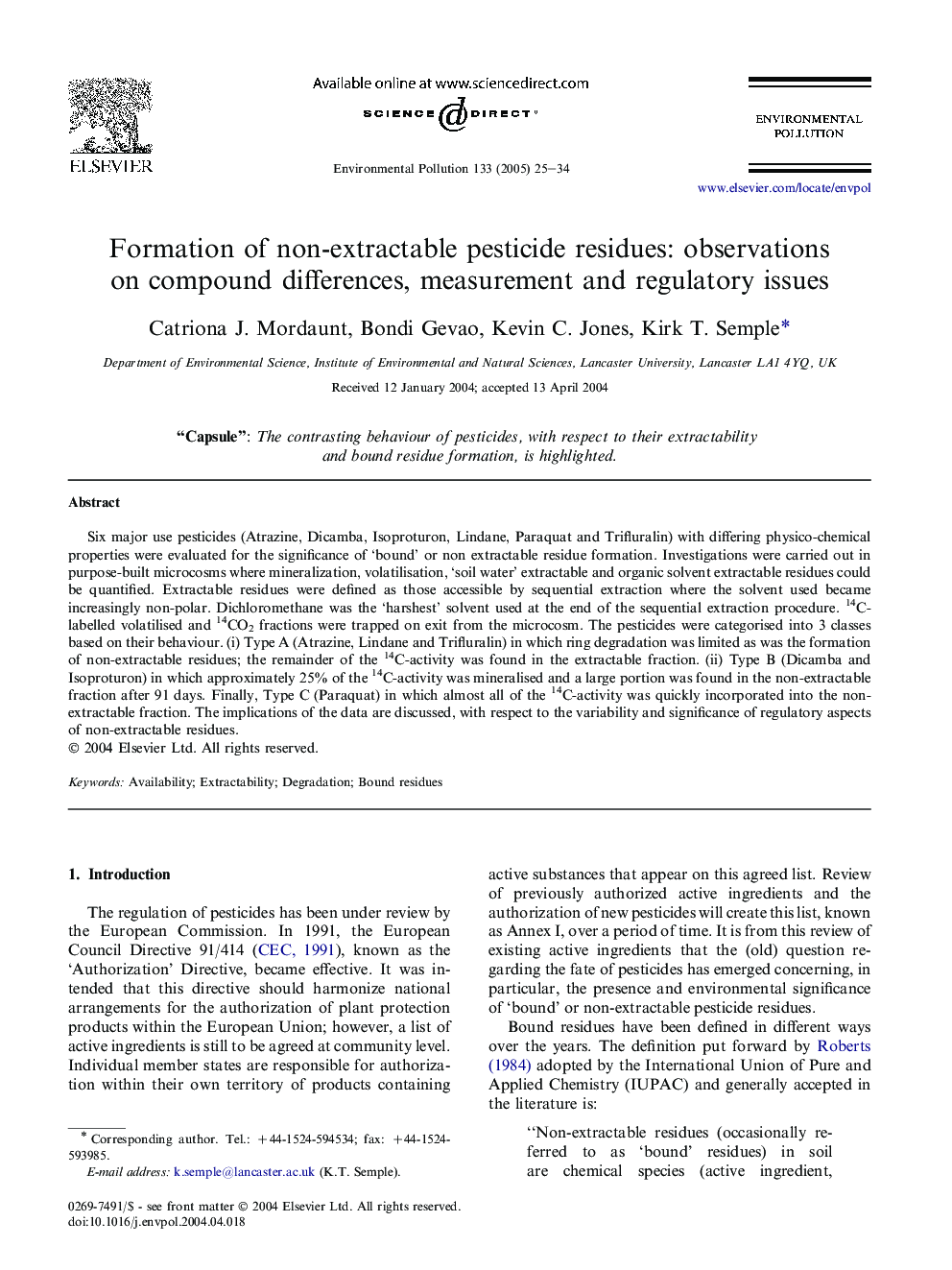| Article ID | Journal | Published Year | Pages | File Type |
|---|---|---|---|---|
| 9456514 | Environmental Pollution | 2005 | 10 Pages |
Abstract
Six major use pesticides (Atrazine, Dicamba, Isoproturon, Lindane, Paraquat and Trifluralin) with differing physico-chemical properties were evaluated for the significance of 'bound' or non extractable residue formation. Investigations were carried out in purpose-built microcosms where mineralization, volatilisation, 'soil water' extractable and organic solvent extractable residues could be quantified. Extractable residues were defined as those accessible by sequential extraction where the solvent used became increasingly non-polar. Dichloromethane was the 'harshest' solvent used at the end of the sequential extraction procedure. 14C-labelled volatilised and 14CO2 fractions were trapped on exit from the microcosm. The pesticides were categorised into 3 classes based on their behaviour. (i) Type A (Atrazine, Lindane and Trifluralin) in which ring degradation was limited as was the formation of non-extractable residues; the remainder of the 14C-activity was found in the extractable fraction. (ii) Type B (Dicamba and Isoproturon) in which approximately 25% of the 14C-activity was mineralised and a large portion was found in the non-extractable fraction after 91 days. Finally, Type C (Paraquat) in which almost all of the 14C-activity was quickly incorporated into the non-extractable fraction. The implications of the data are discussed, with respect to the variability and significance of regulatory aspects of non-extractable residues.
Related Topics
Life Sciences
Environmental Science
Environmental Chemistry
Authors
Catriona J. Mordaunt, Bondi Gevao, Kevin C. Jones, Kirk T. Semple,
